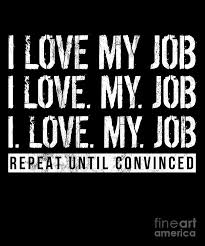We have suspected, for years, that B2B buyers make purchase decisions based on how they feel, rationalizing the decision with data supporting those decisions. Scott Gillum, has just published a fascinating piece of research that goes deeper, asking, “What creates these feelings/emotions, how do we address that?” It’s an important read, ‘Emotions’ don’t drive B2B purchase decisions, this does.
But there is a different way to think about this article. It’s about human behavior, what drives engagement and what drives performance. Buyers don’t adapt certain behaviors just for B2B purchase decisions, this is the way they make decisions and what drives their interaction with their colleagues, in their jobs, and with others.
Which should cause leaders to think about, “what drives the behaviors and performance of our own people?” If what we are seeing from B2B buyers is simply human response and behavior, then the same observations apply to everyone in our organizations. The same applies to what drives the behaviors and performance of our sellers.
Yet, increasingly, we are data driven in how we “coach” and drive the performance of our people. Our conversations focus “just on the facts,” too often ignoring the things underlying performance. Technology gives us more and more data, provides deeper analysis on performance. We leverage technology solutions to coach our people, “The data says you should do more of this and less of that….”
But one wonders if that is actually very helpful. For years, we’ve seen research reporting declining employee engagement (not just sellers). We see higher levels of attrition, people leaving organizations and not just for better comp. We see continued declines in performance, decreasing percentages of people achieving quota, lower win rates.
The data seems to be telling us, that perhaps we may be missing something about what drives the performance of our own people.
We seem to be missing the humanity around how people work, what drives them, what motivates them, what keeps them engaged, how they feel about the work they do, who they work with, and the organizations they choose to be part of.
Scott’s article dives into the behaviors of buyers and should provoke us to think abut what it means for sellers and others in our own organizations. He shows that research had focused on how purchasers feel, but more current research dives into what drives those feelings.
Researchers from Dalhousie University in Nova Scotia, Canada have discovered why people purchase the latest technology. The fascinating new study reveals that the real motivator behind the decision is actually driven by the desire for personal growth and competency.
I suspect similar factors impact the behavior of our people. If we go beyond the data and what they should do, instead start understanding how they feel and what drives those feelings, perhaps we can more effectively connect with our people, build organizations and leadership practices that effectively engage people and enable them to drive higher levels of performance.
We spend lots of time and money trying to understand our customers. As leaders, we should think, our people are our customers–and they are no different than our end customers.

“You’re bang on” as they say, we need to look at both rational and emotional drivers of success. There needs to be a balance. It’s the “softer side” of selling.